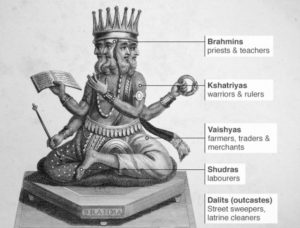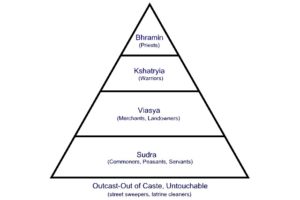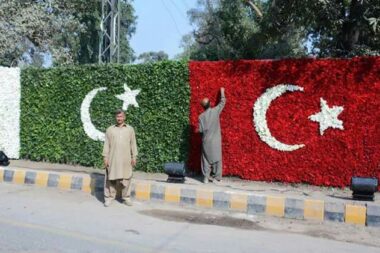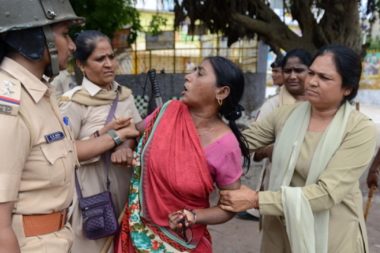By Marria Qibtia Sikandar Nagra
The Social Matrix
 South Asia is a geographically populous region, characterised by dominant cultural and social variations. Its ethnic and religious diversity stands at the core of these variations. Home to hundreds of ethnic groups , which have a distinct system of language, culture as well as religious belief and practice , the cultural institutions grant some semblance of uniformity to the region. Join me as I take you to a journey of understanding three main cultural institutions of South Asia; Family, Jati and Varna
South Asia is a geographically populous region, characterised by dominant cultural and social variations. Its ethnic and religious diversity stands at the core of these variations. Home to hundreds of ethnic groups , which have a distinct system of language, culture as well as religious belief and practice , the cultural institutions grant some semblance of uniformity to the region. Join me as I take you to a journey of understanding three main cultural institutions of South Asia; Family, Jati and Varna
Family: South Asians impart great significance to the unit of family. Their family lives are not only cherished and sacred but their relations with family members are valued and dignified. The element of respect towards their elders is something ingrained in their mindsets. South Asians would go to lengths to ensure that their elders are satisfied from their demeanour and are happy with the choices of their offsprings and descendants.Many South Asian children feel that they can never fully “repay” their parents for providing them not only with the “gift of life” itself but for also attempting in curating a good lifestyle that meets their children’s needs. As a result the bonding between the parents and children is dignified and withstands the test of circumstances and unforeseen scenarios.
 The ability of handling a conflict without letting it affect the basis of the unit of family is something that this bonding allows. It also accounts for the reason why till date Joint family residential setups continue to operate in South Asia in contrast to the nuclear family units of the West. The concept of elders sitting together , discussing to tackle hardships experienced by any member of the family is a gift in itself. South Asians like this get to to experience the wisdom of their elders who assist them in their decision making processes.They do not have to always figure out thing son their own since they know they have a strong support system at their back, that will readily look into what bothers them. Likewise, the prospect of marriage is discussed amongst all members , insight is gathered and a mutual decisions is made that everyone respects.
The ability of handling a conflict without letting it affect the basis of the unit of family is something that this bonding allows. It also accounts for the reason why till date Joint family residential setups continue to operate in South Asia in contrast to the nuclear family units of the West. The concept of elders sitting together , discussing to tackle hardships experienced by any member of the family is a gift in itself. South Asians like this get to to experience the wisdom of their elders who assist them in their decision making processes.They do not have to always figure out thing son their own since they know they have a strong support system at their back, that will readily look into what bothers them. Likewise, the prospect of marriage is discussed amongst all members , insight is gathered and a mutual decisions is made that everyone respects.
 Jati: Jati is the caste system operational in the South Asian country of India.This is linked with the idea of lineage or kinship. It is approximated that the total number of Jati’s in India are about 3000 in number, which are not grouped or ranked in order of status. However despite this claim, each local area of India manifests a ranking of Jati which is primarily germinated from the notion of purity and dirt. Each Jati is said to have a unique vocation, but not everyone in the Jati renders it. For instance there are workers in a Jati who do not work, carpenters who do not build, Brahmins who do not act as priests. The members of a Jati display affinity towards their fellow members. They prefer marriage to members from the same Jati and will also be loyal to their fellow members. Jati’s are usually managed and organised by biradri or brotherhood which constitutes of a small administrative group curated from a particular Jati that oversees the working of the Jati and also has the potential to banish an offender from the Jati.
Jati: Jati is the caste system operational in the South Asian country of India.This is linked with the idea of lineage or kinship. It is approximated that the total number of Jati’s in India are about 3000 in number, which are not grouped or ranked in order of status. However despite this claim, each local area of India manifests a ranking of Jati which is primarily germinated from the notion of purity and dirt. Each Jati is said to have a unique vocation, but not everyone in the Jati renders it. For instance there are workers in a Jati who do not work, carpenters who do not build, Brahmins who do not act as priests. The members of a Jati display affinity towards their fellow members. They prefer marriage to members from the same Jati and will also be loyal to their fellow members. Jati’s are usually managed and organised by biradri or brotherhood which constitutes of a small administrative group curated from a particular Jati that oversees the working of the Jati and also has the potential to banish an offender from the Jati.
It is interesting to note that Jati’s are not static groupings. They have the potential to change their positions over a significant period of time. These changes may be a result of economic and social improvements in status. According to scholar M.N. Srinivas , the process of Jati mobility is termed as “sanskritization”. In order to be. As a part of this process , the members of the lower Jati tries to emulate the norms , values and practices of the upper Jati’s. They may even change the name of their Jati to something similar to that of the upper Jati’s in order to secure a good position. If the Jati gains acceptance for its emulation and copying of the norms of the upper Jati, they then may marry their daughters to members of upper Jati in order to secure membership. In due time, the new position of the stated Jati will be accepted and solidified on the social scale.
 Varna: Varna is hailed as the social stratification of the Indian society based on the castes. Four primary categories of Varna are: Brahmins (the priests, teachers and the intellectuals), Kshatriyas (kings, warriors and administrators), Vaishyas (farmers, traders and agriculturalists) and the Shudras (labourers, workers and artisans). The debut mention of the Varna system is said to be found in the Purusha Suktan verse of the ancient Sanskrit Rig Veda. Purusha us hailed as the first being constituted by the combination these four Varna’s The Brahmins represented the mouth, the Kshatriyas represented its arms, Vaishyas the highs and the Shudras represented the feet. The central purpose of the Varna system was to allow a categoric distribution of social responsibilities among people to maintain caste purity and ensure the establishment of the eternal order. This system was believed to allow a curtailment of conflict between people. The Brahmins are entrusted with the task of providing education and spiritual leadership.They are meant to determine the values of the society at large. The Kshatriyas are responsible to protect the society from any source of external attack or conflict. They are to be the guardians of the society. The Vaishyas are the productive castes. They are to protect the animals and the land and ensure smooth productions The Shudras are meant to display loyalty and be subservient to others. They are the only class that are allowed to accept another employment.
Varna: Varna is hailed as the social stratification of the Indian society based on the castes. Four primary categories of Varna are: Brahmins (the priests, teachers and the intellectuals), Kshatriyas (kings, warriors and administrators), Vaishyas (farmers, traders and agriculturalists) and the Shudras (labourers, workers and artisans). The debut mention of the Varna system is said to be found in the Purusha Suktan verse of the ancient Sanskrit Rig Veda. Purusha us hailed as the first being constituted by the combination these four Varna’s The Brahmins represented the mouth, the Kshatriyas represented its arms, Vaishyas the highs and the Shudras represented the feet. The central purpose of the Varna system was to allow a categoric distribution of social responsibilities among people to maintain caste purity and ensure the establishment of the eternal order. This system was believed to allow a curtailment of conflict between people. The Brahmins are entrusted with the task of providing education and spiritual leadership.They are meant to determine the values of the society at large. The Kshatriyas are responsible to protect the society from any source of external attack or conflict. They are to be the guardians of the society. The Vaishyas are the productive castes. They are to protect the animals and the land and ensure smooth productions The Shudras are meant to display loyalty and be subservient to others. They are the only class that are allowed to accept another employment.
The social and cultural matrix of South Asia with respect to an analysis of the unit of Family, Jati and Varna displays the regions organised demeanour , that exists despite its cultural and ethnic diversity.It is the South Asian’s methodology of managing and directing their lives in accordance with their needs and values.









